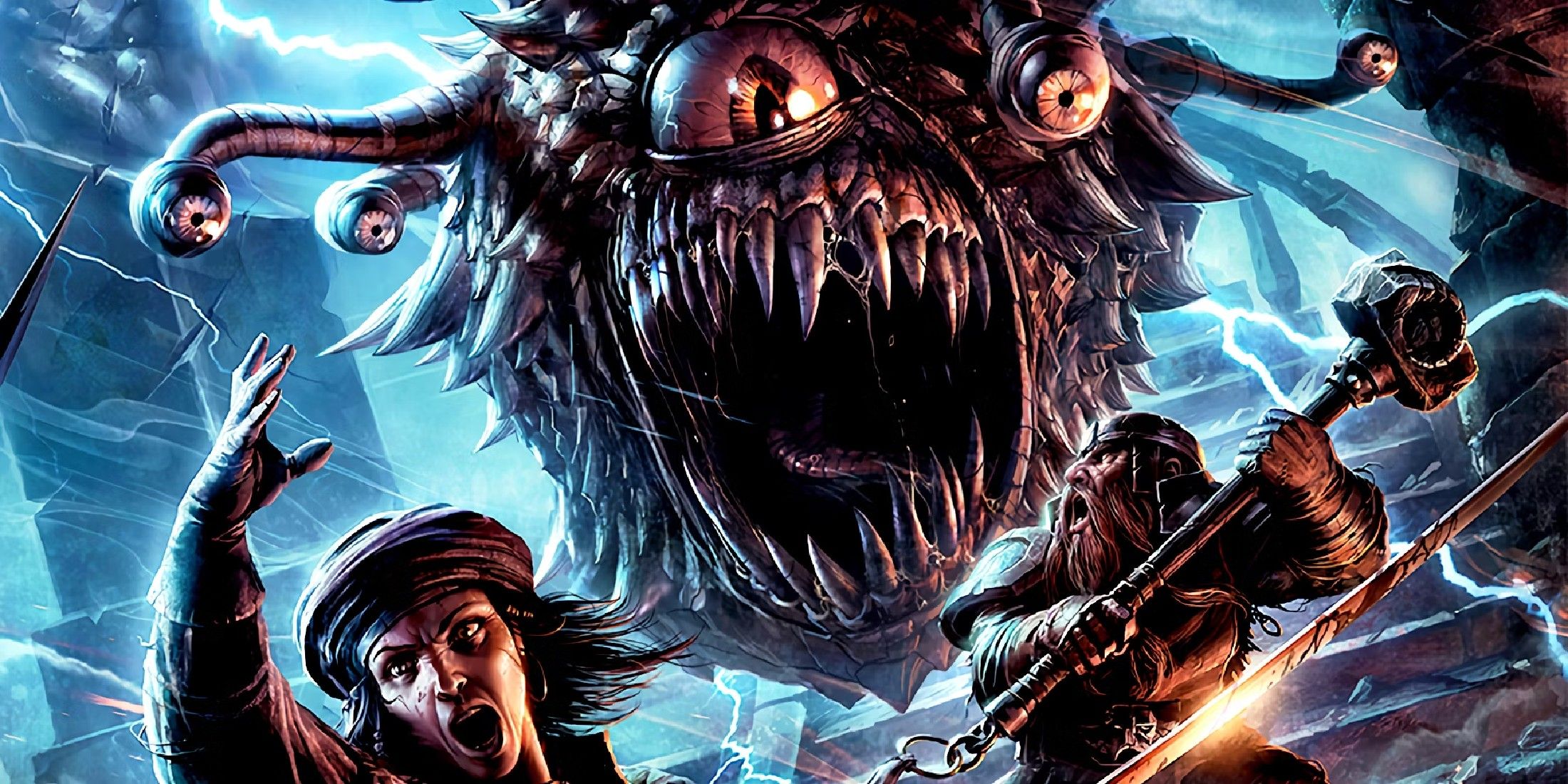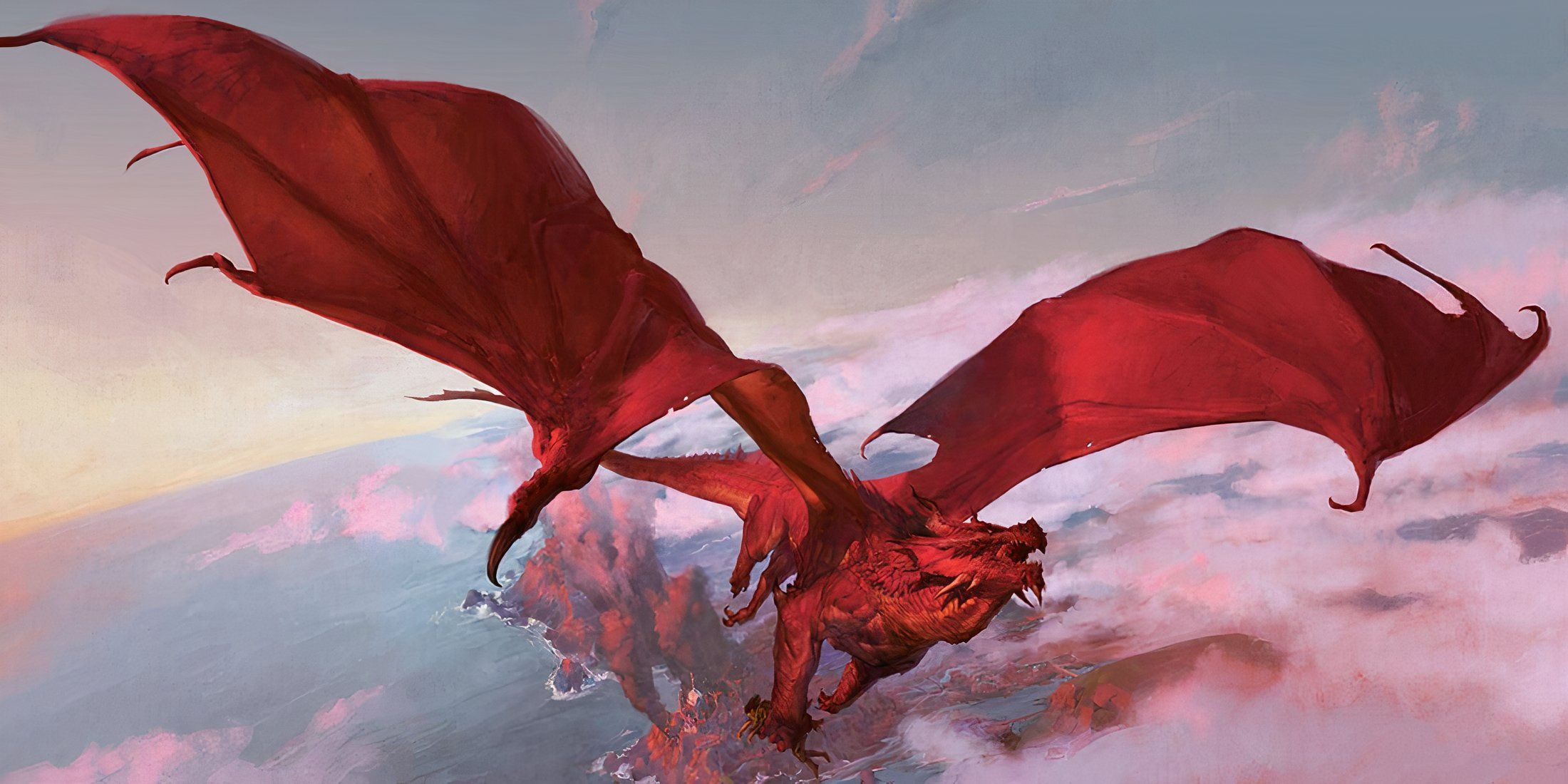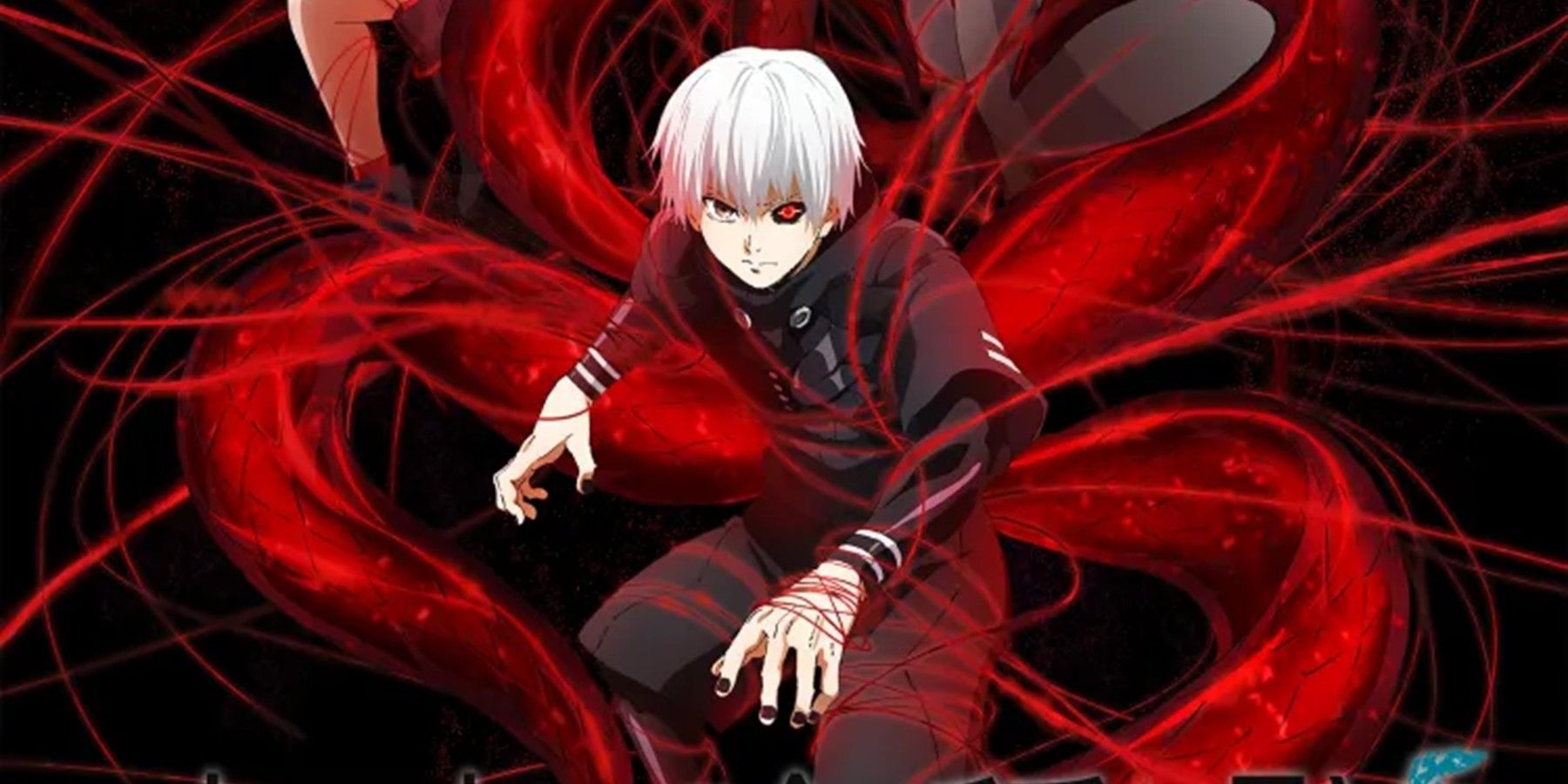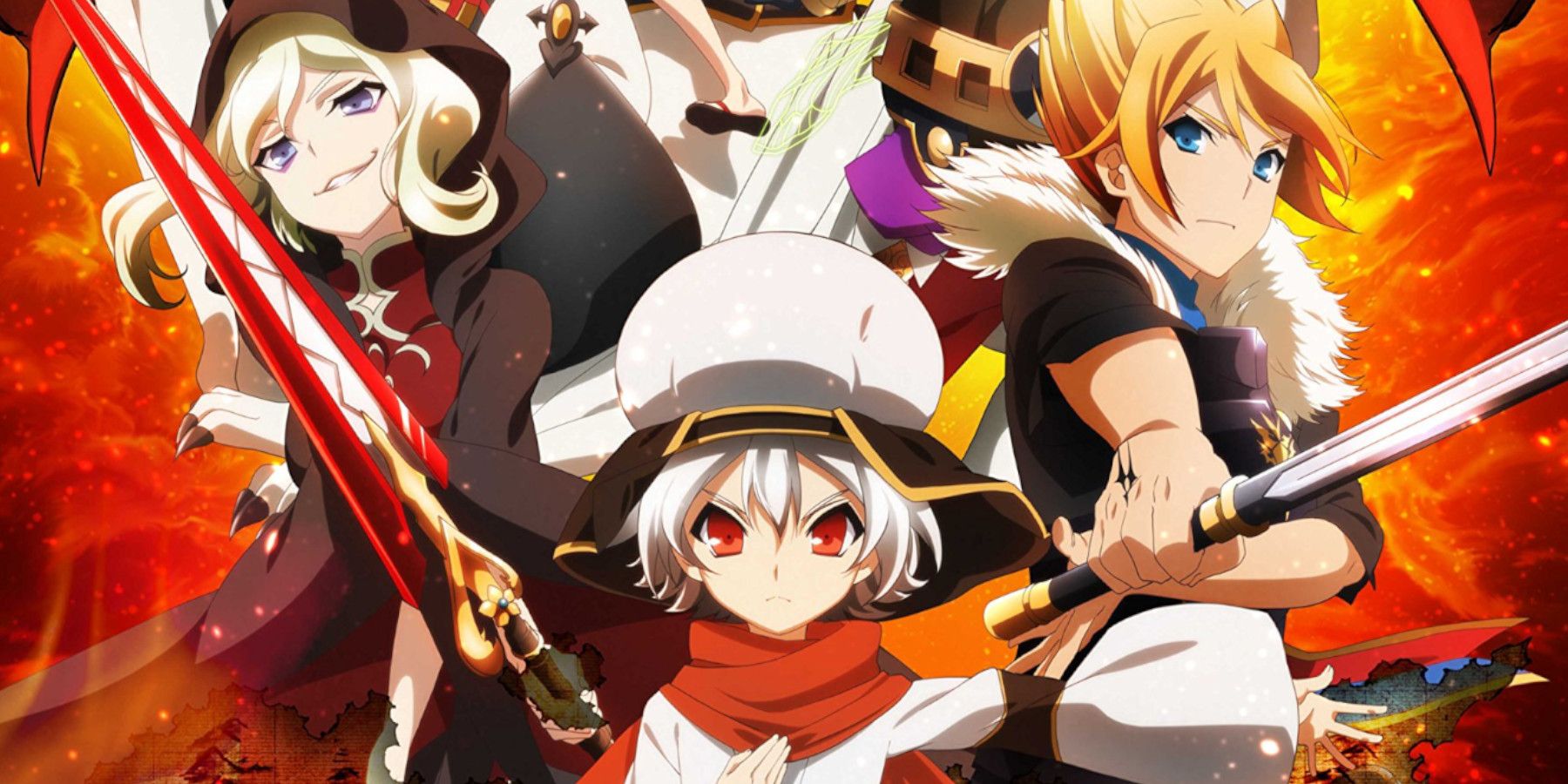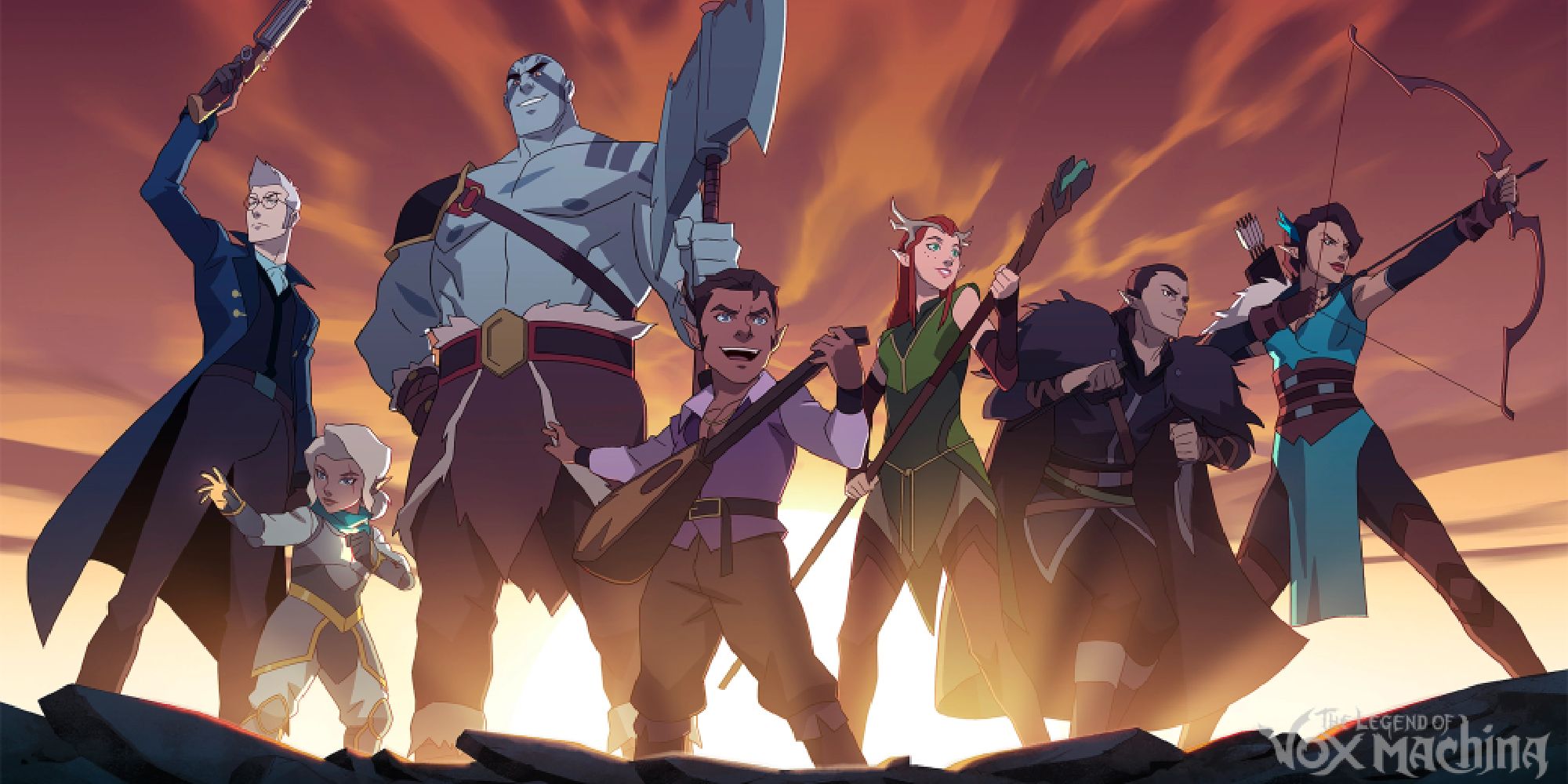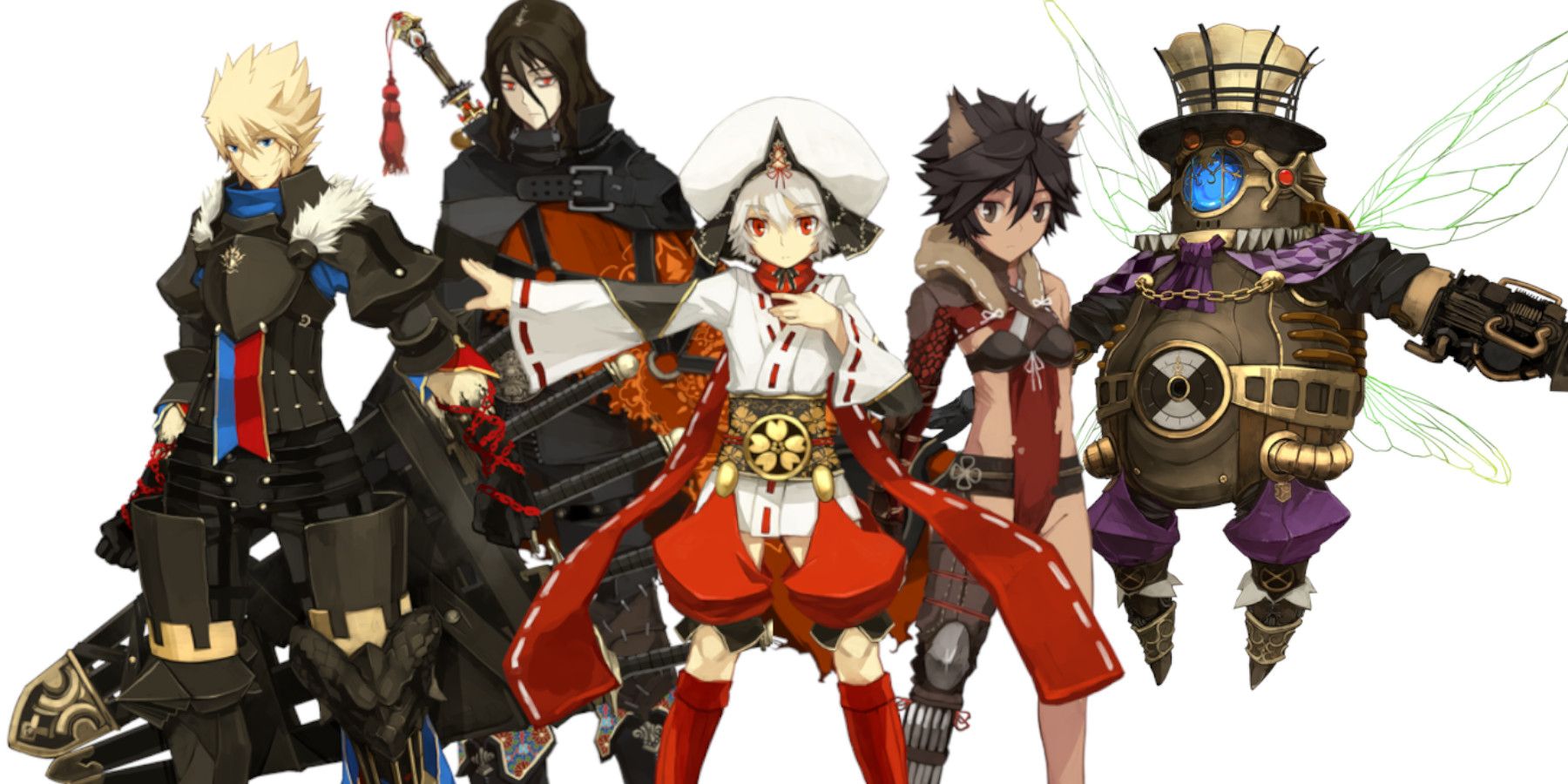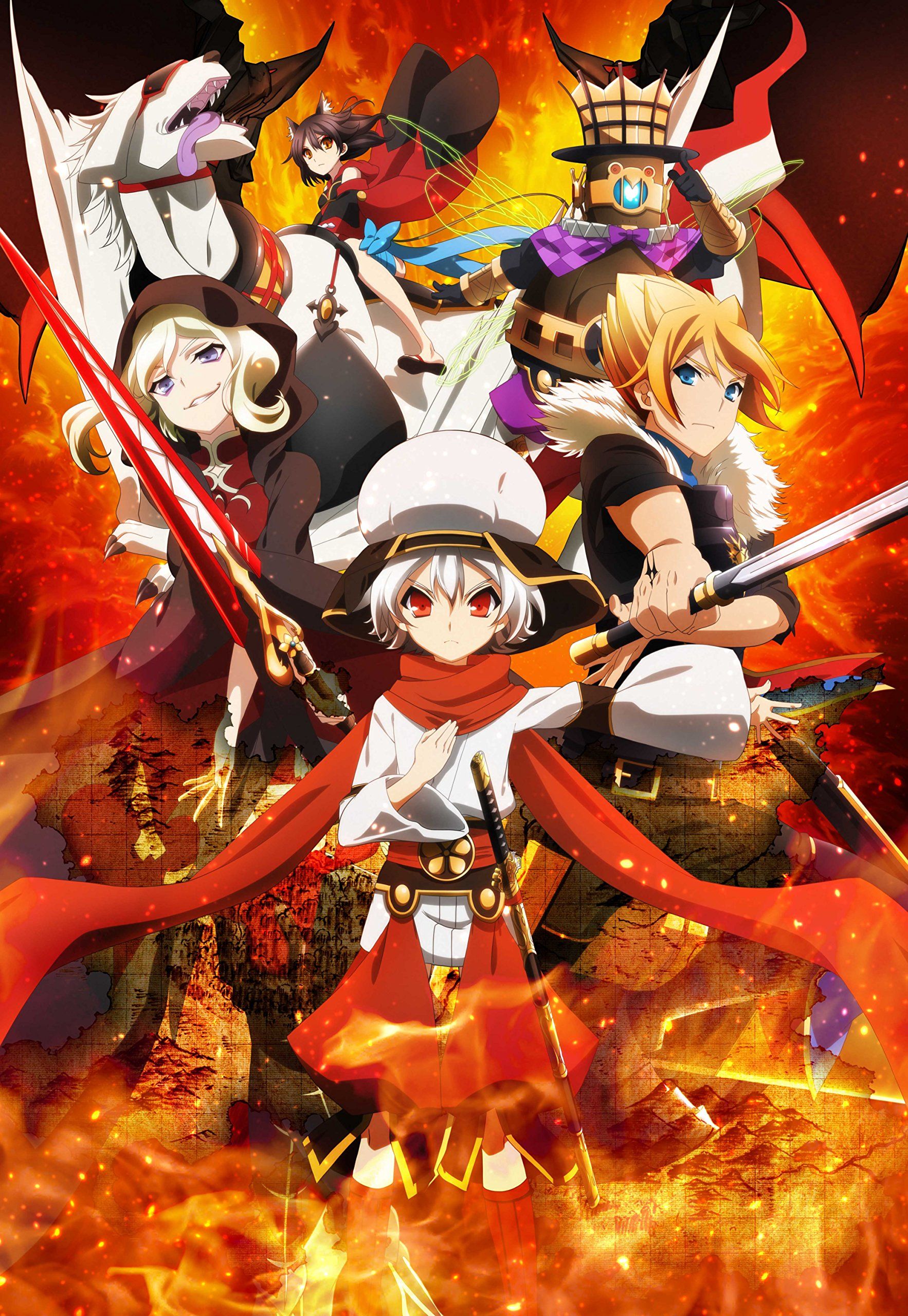Once upon a time, the writers of Madoka Magica, Fate/Stay Night, and Durarara, as well as two other artists, participated in a Dungeons & Dragons campaign, and one day it got turned into an anime. In a perfect world, that single sentence would be all people needed to watch Chaos Dragon, but unfortunately, this anime doesn't come even close to living up to how cool the premise sounds.
Aired in the Summer of 2015, Chaos Dragon is a 12-episode series from director Masato Matsune and Studio Silver Link as well as its subsidiary, Connect. It is an adaptation of the 2012 light novel series Red Dragon, which is technically less of a novel and more of a transcript of the six days in which these esteemed creators played together.
The Trouble With Adapting D&D
Let's begin with the elephant in the room. Adapting D&D into a dramatized series - conceptually speaking - almost seems tougher than adapting video games to TV and film. D&D is more of a social event between friends than a strictly structured narrative to be consumed. There's plenty of reason to adapt a published novel or a comic, but a tabletop game with a rich story that in most cases has only been witnessed and chronicled by the actors within?
The attempts have been so few that only two come to mind: the official D&D movie and the Critical Role animated series, both of which are very recent with consideration for a boom in interest. From the outset, D&D is inherently formulaic unless the participants are well-versed and eager to try more advantageous storytelling with more complex modules.
Campaigns often begin in generic locales like taverns, and the stories can meander in unexpected and chaotic ways that can be unproductive to a typical narrative. Experimentation in any narrative can be appreciated, but when factoring in the lack of seriousness inherent to the fun of the game, at the end of the day, D&D is a mess. A beautiful mess, but a mess nonetheless, demanding serious creative liberties to make the story work in a serialized format.
Doing so might take away from the simple fun of watching people goof around a table role-playing since that is ultimately the point of it all. So perhaps, apropos of nothing, Red Dragon would always be an unwise idea. Maybe. Even so, it's no wonder why people were excited. With the players involved, it was practically Critical Role for Japanese creators.
What is Chaos Dragon?
In the year 3015, the war between the rivaling countries of Donatia and Kouran has torn the world asunder, and the island of Nil Kamui has been caught in the middle. The royal family has been dethroned and Red Dragon, the deity of Nil Kamui, has gone berserk, destroying the lands as opposed to helping their people.
Amidst the chaos, Ibuki (created by manga artist Shimadoriru) is a young man who is descended from the island's royal family, but who rejects his throne, wishing for peace rather than war. Unfortunately, when war comes to his home, he cannot avoid choosing a side. He connects to the Red Dragon, who offers him the power to defeat the enemies of his home, but at a great cost.
He joins an expedition between members of both nations with the shared objective of bringing peace to their world, and all paths lead to the Red Dragon. First, there's Eiha (created by Izuki Kougyoku), a Bounded One - a slave bound to a magical beast. Then, Lou Zhenhua (created by Gen Urobuchi), a female assassin from Kouran wielding a sentient demonic sword.
Next, Swallow Cratsvalley (created by Kinoko Nasu), a knight who breaks whatever tool he uses in exchange for drawing out its maximum power before it is expended. Finally, there is Kaguraba Raihou Gramstahl (created by Ryohgo Narita), a robotic merchant and the lord of a manor in the city of Haiga.
It's easy to feel the signature touch of authors like Urobuchi or Nasu within not only their respective characters but the world they all helped to create through their role play. Urobuchi's claim to fame is in the darkness and suffering through which he puts characters, something notably successful thanks to how he puts contrasting elements in his stories.
A tragic death is more tragic when it happens through the eyes of a child or one who is naive to the evils of the world. Ibuki begins the story averse to war, but by the end of the first episode, he's forced to kill a friend in order to tap into the power he needs to save the world. It's certainly edgy, but the concept is promising and lends itself to a captivating hero's journey.
The same could be said for each of the individual characters, whose roles and unique characteristics have the makings of excellent character arcs. Not only does Nasu's character evoke the original prototype of Saber from Fate, but his power is such a unique idea that matches the chaos intrinsic to D&D so well. In terms of ideas, Chaos Dragon is loaded. It's just the execution that completely falls flat.
A Poor Adaptation
For one thing, the above description is not entirely accurate to the original board game. For one thing, Gen Urobuchi's character wasn't a woman, but a man named Lou Zhenjie, with a design fitting Urobuchi's sensibility far better. In fact, most of the designs look better in the original artwork for the project than in the show.
One only needs to look at the shapes of the characters' eyes to fully drink in how uninteresting the show is to look at. Despite having so many notable creators attached, the show looks terribly cheap. If the drab colors and poor composition weren't bad enough, the bad CGI is the nail in the coffin. The production team attempts to cover up its low points with flashy graphics and some advantageous camera work, but it only magnifies blemishes.
Worst yet, while the grimdark elements and worldbuilding occasionally show glimpses of the original creators' talents, the show feels ultimately detached from their involvement. It feels like an adaptation of an adaptation. The script was penned by Sho Aikawa, the writer of the original 2003 Fullmetal Alchemist anime (the one that diverged from the manga).
Aikawa already has a somewhat contentious career, but even his wildest stories have some charm in the right hands. Unfortunately, the political storyline is uninteresting and confusing. For the first few episodes, it's hard to even tell what the objective of the party is. Who is on whose side? Is the Red Dragon an ally or an enemy? It's all presented in a jumbled way. Even with all that, it's hard to say it was completely Aikawa's fault.
People might say that Chaos Dragon deserved a bigger budget and a more experienced creative team. At the very least, some of the authors and artists who created the original project should have been more involved. But it's just as likely that this story wasn't meant to be anything other than a game. And if this really was the best that they could accomplish - and it most certainly wasn't - it likely shouldn't have been attempted in the first place.
